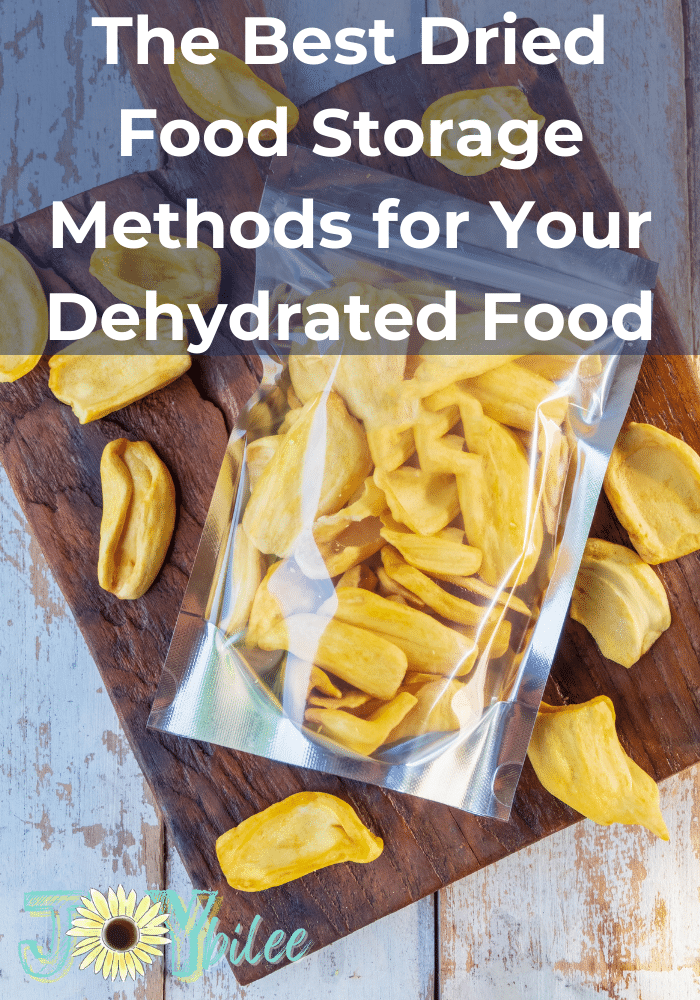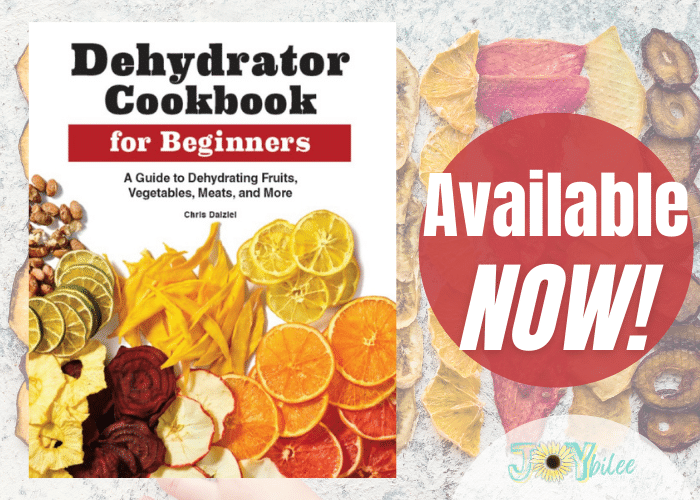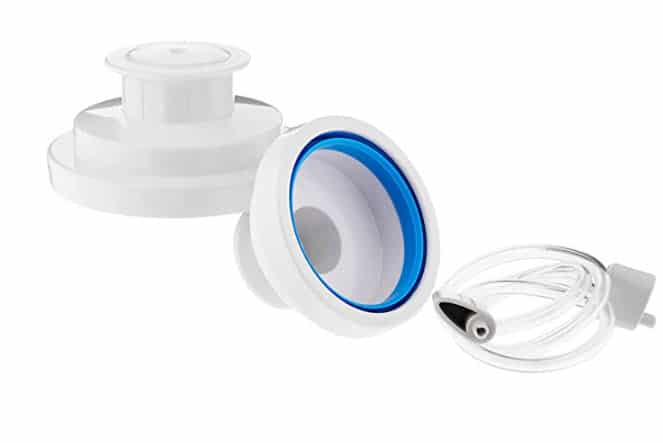After the hard work of growing a garden, preparing food for dehydration, and getting it into storage. Don’t let your hard work of preserving the year’s summer and autumn bounty go to waste. Use one of these dried food storage methods to keep your harvest shelf stable and nutritious for years.
Dehydrating food is a great way to preserve your summer or fall harvest for winter and spring, when those fruits or vegetables are out of season. Storing your dried goods to last, can be done a few different ways. The main keys are keeping out environmental factors like air, light, and moisture. Jars work great to keep out moisture, and can be sealed with a vacuum sealing device. Storing jars in a cupboard protects the food from light, or on a shelf with a shade cloth works too. Mylar bags are often opaque, and can be sealed. The mylar bags are not breathable, unlike regular plastic, and will keep food fresh longer. Lastly reusable storage containers like those meant for pantry dried good storage, or heavy duty food safe buckets, can also be used. The containers work well either on their own, or in connection with bags and jars to keep food types separate.

One challenge with dried foods is that they try to become not-dry as fast as possible, and will absorb moisture and humidity from the environment. With dried goods, the more we protect them from exposure to the environment, and changes in temperature and gas levels, the longer they’ll stay fresh. A default storage option, that works well for a few months, is to store in plastic. However, longer term, the plastic permits gas and humidity exchange, and plastic isn’t reusable.
A few additional items can also help prolong dried food storage. Oxygen absorbers are highly useful for prolonging storage life in securely sealed containers, they are essential for freeze dried foods. Some recommend using a silica packet, as a moisture absorber for dried, or dehydrated food. Silica packets are not necessary for freeze dried food. Moisture absorbers should not be used with oxygen absorbers, as they can cancel each other out. But either of these can help prolong shelf life when used alone. A few extra steps, and proper containers, can help keep your dried food fresh for years longer than storing it in just plastic baggies.
For items dehydrated for quick snacks, lunch boxes, and dried fruits that I only expect to last a few weeks, baggies are great. Anything I intend to store longer, I like storing in mylar bags or glass jars and reusable sealed containers. These are among the best options for long-term food storage, especially for dried goods. The heavy duty plastic pantry containers also work for things you expect to last a few months, but need to have accessible on a regular basis too.
If you’re new to dehydrating or food preservation, check out this round up on food dehydration here. These storage methods work well for either dehydrated food, dry goods, or for freeze dried food.

1. Dried Food Storage in Glass:
As long as you have shelf or storage space, and jars available, storing in glass is a great dried food storage method. Glass is non-reactive, non-porous, and can be vacuum sealed. Glass lets you look at your food and monitor how well it’s storing. You can reuse glass storage jars for years, until they break. Jars that are no longer suitable for canning, due to a chip on the tracks where the ring secures, can still be used for dried goods, provide the jar can be vacuum sealed.
You’ll need a vacuum sealer jar attachment to create a vacuum inside the jar and seal it. Plus a vacuum sealer — either a hand held one like this or a table top model.
It’s often used to seal jars of freeze dried foods, but can also be used to seal jars of dried herbs, and other dehydrated foods. This sealer is especially helpful if you’re using retired canning jars with dings on the ring secure area, as the sealed lids are impervious to pests and moisture, while the unsealed jar has a weakness due to the damage where the ring secures.
Reuse pasta sauce jars, jam jars, and even glass peanut butter jars for storing dried goods. They work well for storing dried herbs, like mint, oregano, basil, and sage, for easy access for cooking or teas. I dry oranges and grapefruit for teas too, and keep them in jars when the slices are small enough to fit. I have had dried mint, stored in glass jars for 10+ years, still smell and taste like freshly dried mint when I emptied out the jars to reuse them.

2. Sealable Containers for Storage:
Heavy duty, food safe, sealable storage containers such as are recommended for pantry storage, can be good options for dried food storage that you want accessible. Examples of dried foods you may want accessible include beans, raisins, dried apple slices, dried strawberries, and many other fruits. Dried mushrooms, dried greens, carrots, onions, or other cooking ingredients can also be part of that accessible storage.
The heavy duty containers are different than, say, cereal storing containers that don’t seal. The pantry storage containers have a heavy rubber seal, and snap down wings to help keep the container sealed, and food fresh. These are great food storage containers, and while other containers can work in cupboards or for short term storage, these will keep food fresh the longest.
For other bulk storage method, food grade buckets can work. I like packing in mylar, or another storage medium before packing in buckets. Buckets that store food supplies should be stored off the ground, and without direct contact with concrete, as the ground or concrete can react with the plastic, drawing moisture into the bucket.
Food grade buckets are great for storing grain, brown and white rice, and flour, in addition to storing dehydrated goods. Most food storage should be kept in a dry place, that is preferably cool as well. Whether your food storage is simply for winter, or is designed as emergency food storage for natural disaster response, keeping a few different dried good storage methods handy will help.

3. Storing Dried Foods in Mylar Bags:
Mylar bags, also known as a Mylar pouch, are a good storage option for freeze dried goods, and dehydrated foods. Many companies that offer emergency food supply designed for long-term storage will sell items packed in mylar bags. Choose 7ml mylar bags when you have a choice. The thicker mylar doesn’t puncture as easily from the sharp edges of dried food. If you have especially sharp food to package, add a paper towel to the bag to reinforce it before adding your food. Rice, wheat, and dried fruit can be troublesome when sharp edges are involved.
Oxygen absorbers are recommended to store with freeze dried goods, and can help with preserving the freshness of dehydrated goods as well. Oxygen absorbers work by absorbing the oxygen, and releasing nitrogen to preserve freshness. If you’re priority is keeping the moisture content of the dried goods low, then a desiccant packet could work instead of an oxygen absorber. Desiccant packets and oxygen absorbers are an either, or, option for keeping dried goods fresh, they should not be used in conjunction as they will cancel each other out.
Dry foods, like dried peaches, or dried pineapple that can be stored in small amounts are best for mylar bags. The bags do not need to be vacuum sealed. However, some types of mylar bags do need an impulse sealer to seal properly. Some types of these bags do come with a self-sealing option though, so look at what’s available before making your purchase.
Mylar bags also work great for storing dried meal mixes, for camping trips, or hiking adventures. They also work great for emergency meals, say for keeping in the car or truck during the winter, or for survival preparedness.
Properly Storing Dehydrated, Freeze Dried Foods
Properly storing your freeze dried or dehydrated food so that it lasts for many years, is just as important as ensuring that the food is properly preserved before storage. When you take the care to package the food using best practices, your food can last 5 to 10 or even 25 years longer than food stored haphazardly. Proper storage practices reduce contamination, keep out bugs and vermin, and make sure that your food tastes good and has nutritional value when you need it.

Dive into dehydrating food:
If you’ve never dehydrated food before, you can start this year. Nearly any fruit or vegetable can be dehydrated. Dehydration is one of the most accessible methods of food preservation, and you don’t even need a dehydrator to get started. You can even dehydrate meat and full meals.
- What’s dehydrating, anyway?—Learn the basics of how dehydrating works, and the essential tips and tools you need to get started with your dehydrator.
- Dehydrating from A to Z—Discover how to properly dehydrate fruits and veggies, meat and fish, and even herbs and spices.
- Meals, snacks, and sides—Put your newfound knowledge to the test with recipes for classic dried foods like Kale Chips and Apple Leather, and full meals like Shepherd’s Pie and Curry Chicken with Rice.
- Pro-tips on food preparation, rehydration, and using your dehydrated food to boost flavor and nutrition.
Start drying your own food today with the Dehydrator Cookbook for Beginners.





Can desiccants be used to further dry already commercially dried fruits to make them safe to later store in Mylar bags with O2 absorbers? (In other words, to bring the moisture level down to 10%).